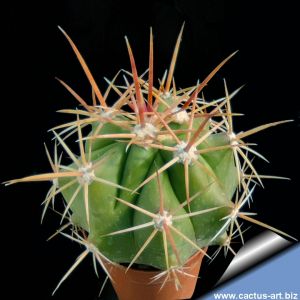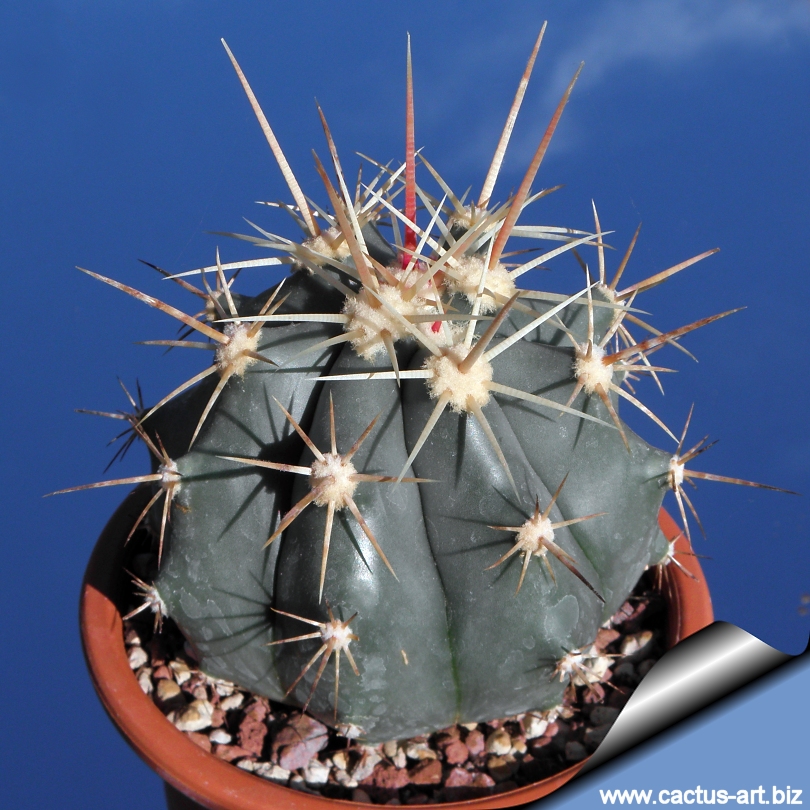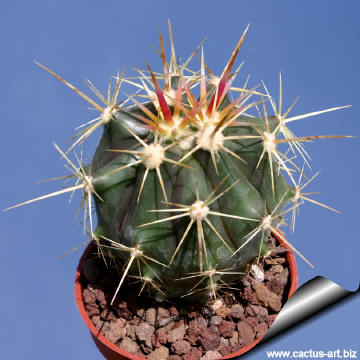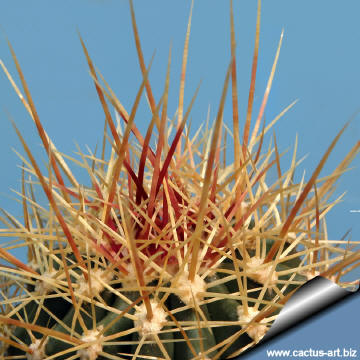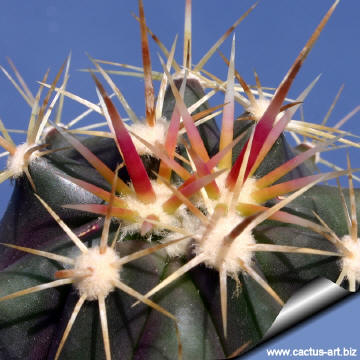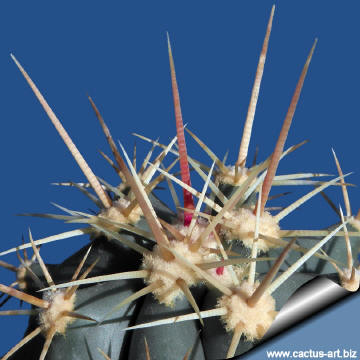-
x
Description
Beautiful species. The F. "alamosesis" has few wide ribs which are a dull blue-grey in colour. The areoles are round bigand woolly with few but strong creamy-white to pale-brown spines. Family: Cactaceae (Cactus Family) Scientific name: Ferocactus pottsi var. alamosensis Conservation status: Listed in CITES appendix 2.
| |
| Description: The plant labelled F. pottsi var. alamosensis we observed in cultivation are easily tell apart from the similarly named Ferocactus pottsii alamosanus, may be the name "alamosensis" is merely a misspelling of "alamosanus", in spite of this error of orthography the two plant are really different and both worth of cultivation. "alamosesis" has few wide ribs which are a dull blue-grey in colour. The areoles are round big woolly largely spaced with few but strong creamy-white to pale-brownies spines. The stem is only partially covered by spines and similar to that of F. pottsii. "alamosanus" has numerous pale green to green-bluish ribs, the areole are elongated with thin needle-like spines than cover almost completely the stem. | |
| Cultivation: They are summer-growing and pretty easy plants thought slow to start. They are suited for any rich, well drained soil such us clay, pumice, lava grit, and only a little peat or leaf-mould. If potted, repot them preferably in the spring, if their roots become cramped. Generally, they should be repotted every other year in order to provide fresh soil. However, this doesn't necessarily mean they'll need larger containers. Fill about a quarter of the pot with broken crocks, gravel, etc. to promote good drainage. After repotting, do not water for a week or more. Water regularly during the aestival growth cycle (this plant need plenty of water, but do not overwater and let their soil dry out between waterings), and also needs to be avoided wetting the body of this plant while it is in sunlight. A wet cactus in the sun light can cause sun burning which can lead to scares or even fungal infections and death, keep rather dry in winter. No water should ever be allowed to stand around the roots. Feed with a high potassium fertilizer in summer. Propagation: Seeds are the only way of reproducing. Seed Collecting: Permit fruit to ripen. Fruit must be significantly overripe before harvesting seed; clean and dry seeds | |

